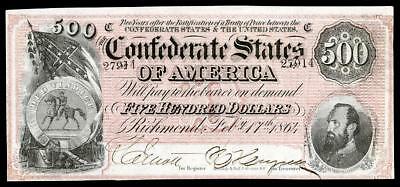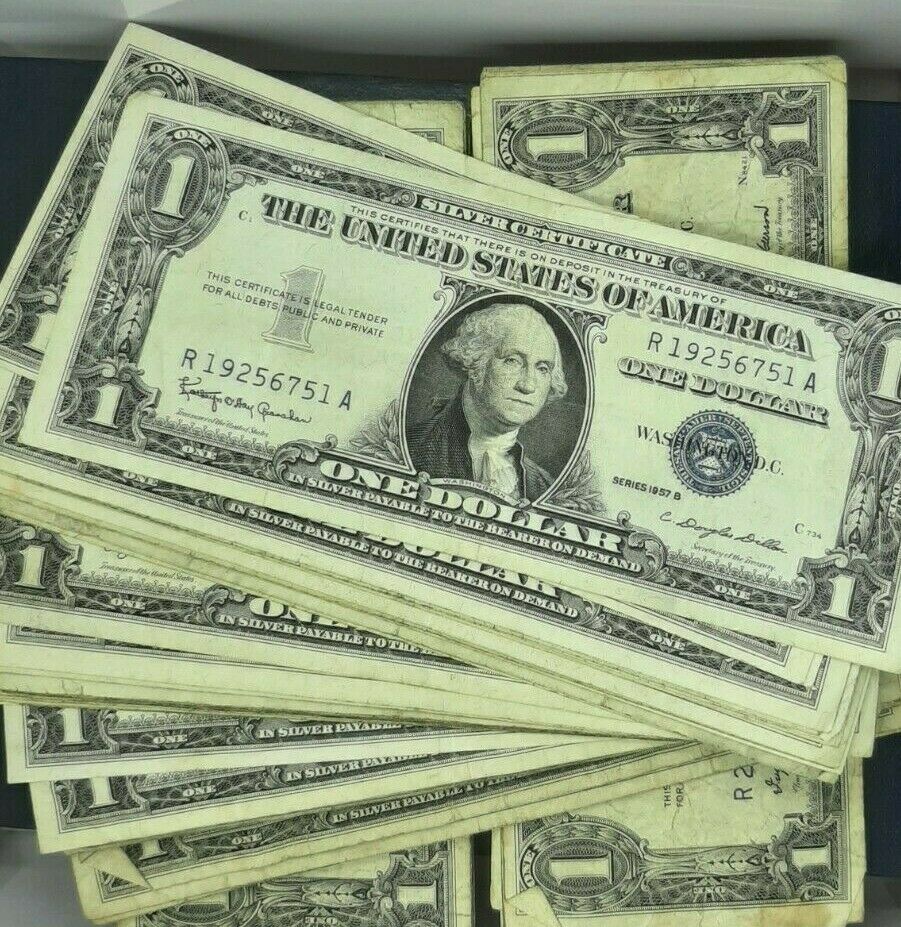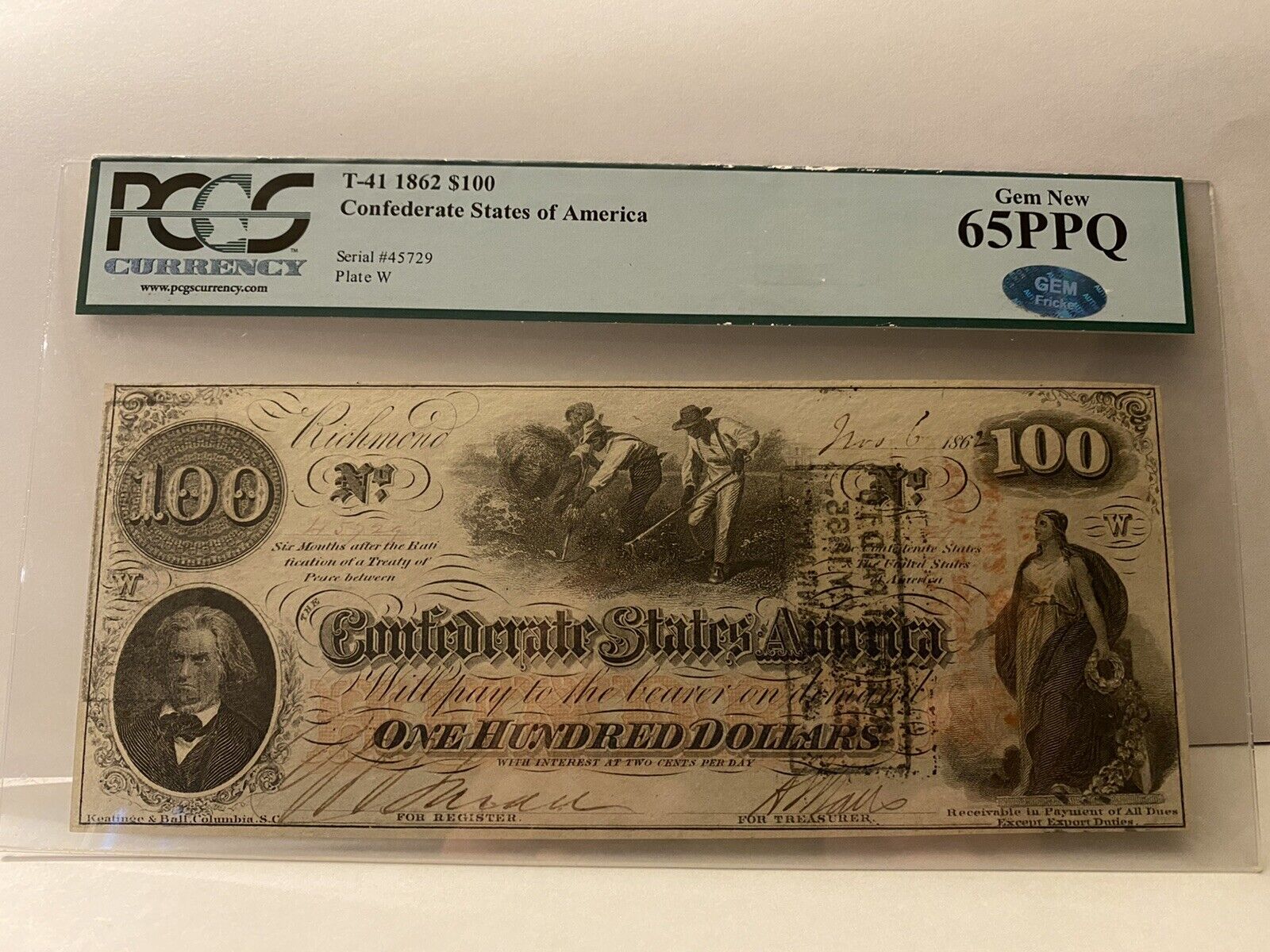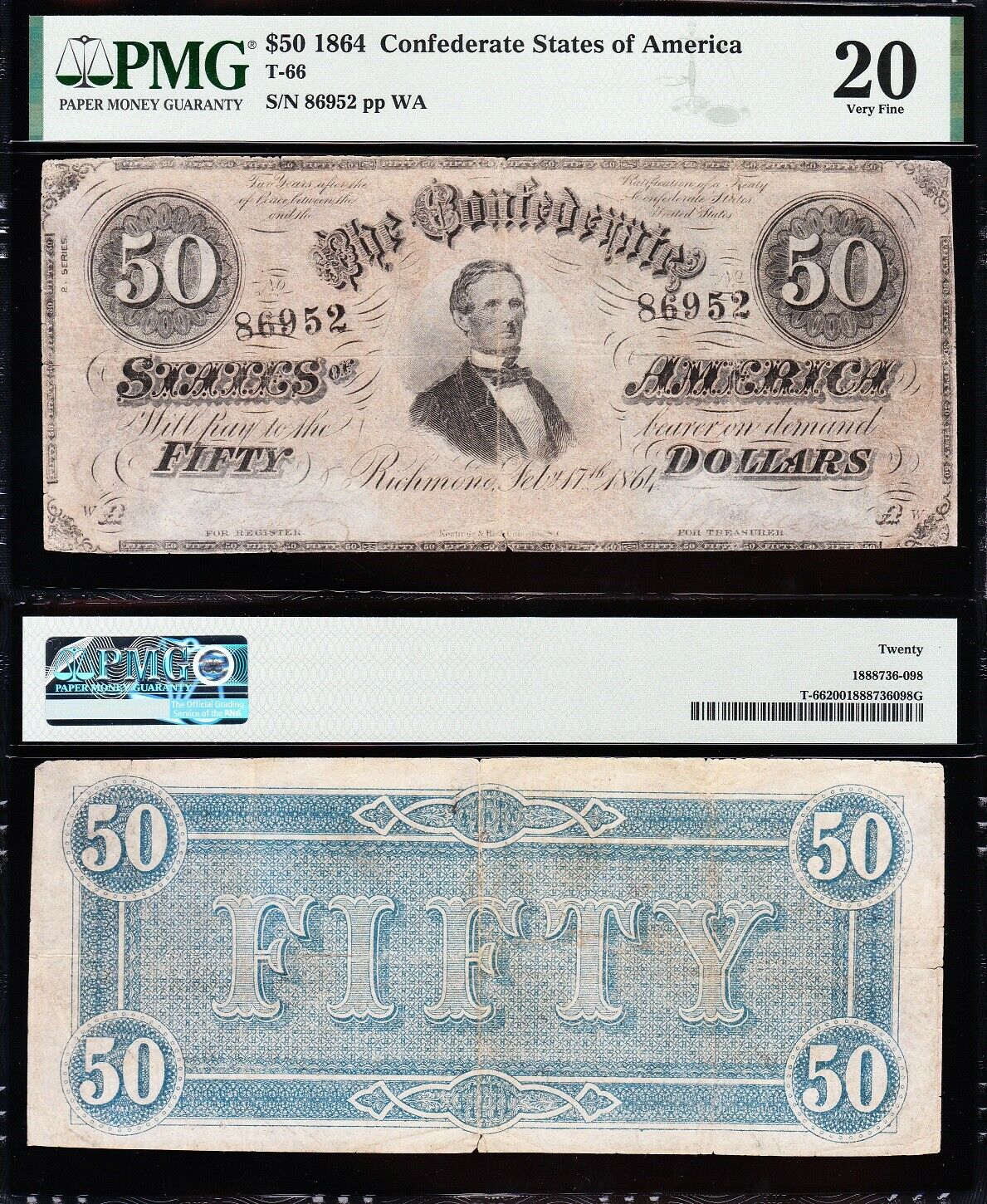-40%
T-52 PF-3 State II 1862 Confederate Paper Money - Rarity 12 error!
$ 104.54
- Description
- Size Guide
Description
T-52 PF-3 Sate II 1862 .00 CSA Currency.State capitol proposed for Columbia, S.C. in the center. R.M.T. Hunter to the right. Printed by B. Duncan at left. 2
Series.
Plate break resulting in an arrow shape above right plen!
Serial number 60245. Plen H.
Extremely Rare - Rarity 12!
Very Fine to Extremely Fine using traditional grading! Cut out canceled.
Condition census - 6th finest known!
Genuine.
The T-52 was printed on plain pink paper and has a blue back. The center of the note presents a representation of the proposed state capitol of South Carolina in Columbia. R. M. T. Hunter, who served as Secretary of State for a brief stint, as was a Confederate Senator, is shown at the lower right. The ornate blue back bears the denomination. This note was payable six months after the ratification of a Treaty of Peace between the Confederate States and United States. It also was receivable for all dues except exports dues and fundable in 8% stock.
This type comes on plain, high quality pink bank note paper. T-52 is rich with varieties, including double printer name errors, “series” errors, plate letter mismatches, and a number of inverted backs. The T-52 PF-9 is the most common inverted back of all Confederate currency, yet it remains quite rare. There are numerous undocumented plate states due to broken plate letters and other reasons. These offer more opportunity for study and discovery.
This type is common in all grades except Choice Extremely Fine to Choice Uncirculated. The latter will be very difficult to find.
A note about 3rd party grading. PCGS and PMG do a good job putting a floor on quality within a grade range and have become proficient in detecting repairs (though occasionally they miss something, or see something that is not there, as we all can).
Notes housed in Net or Apparent holders have a wide range of quality from very nice (in rare cases may be nearly choice) to dogs with major problems, so each needs to be evaluated on their own.
However, PMG and PCGS focus on technical grading due to circulation and damage and do not have a mechanism for evaluating condition or eye appeal - whether a note is average, better than average, choice or gem for the grade based on its color, trim and margins. The exception to this are slabbed notes of New or Uncirculated grades to some degree. This is important as Very Fine, Extremely Fine or AU notes can have a wide range of values depending on these factors not reflected in the slab grade. A fully framed Confederate or obsolete note is worth considerably to a lot more than one that is trimmed into the margin for the same grade. Likewise, color is important. These factors can affect the value of a note by 50%, 2-1 or even 3-1, e.g., an AU 58 (PPQ or not) T-20 1861 CSA note trimmed into the margin is worth between 0 and 0. The same grade, AU 58 (PPQ or not), with a full frame and good color/inking is worth something like 0 to 00 depending on eye appeal. I will continue to use the terms plus for above average, choice and gem to mean varying degrees of superiority of condition and eye appeal of a note within a grade as documented in my book which is based on what collectors seek out and pay premiums for.
In coins, we’ve seen the third party graders add things like full bell lines, full head, full bands which reflected the market. I’d expect either the grading services or another party to do the same for paper money. If you are just buying the number on the holder for the best price, you may well be buying low end notes for the grade!
Pierre Fricke. Immediate Past President of the Society of Paper Money Collectors; Professional Numismatists Guild (PNG); Professional Currency Dealers Association (PCDA); ANA, EAC, etc...
BuyVintageMoney.
Author of the standard guide book to Confederate money - Collecting Confederate Money Field Edition 2014.
Free shipping and insurance.
eBay has announced that it will start to collect sales tax on behalf of sellers for items shipped to customers in Alabama (Jul 1), Connecticut (Apr 1), Iowa (Feb 1), Minnesota (Jan 1), New Jersey (May 1), Oklahoma (Jul 1), Pennsylvania (Jul 1), and Washington (Jan 1). Additional states are being added like Idaho and more than 20 others. This is the new internet tax out of the US Supreme Court Wayfair decision. Buyers are responsible for paying this sales tax.
See eBay information for list of states eBay charges this tax payable by buyers to eBay as part of eBay invoices -- https://www.ebay.com/help/selling/fees-credits-invoices/taxes-import-charges?id=4121#section4











